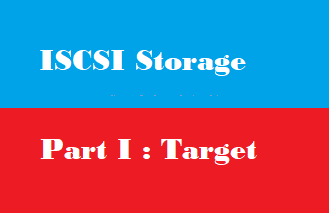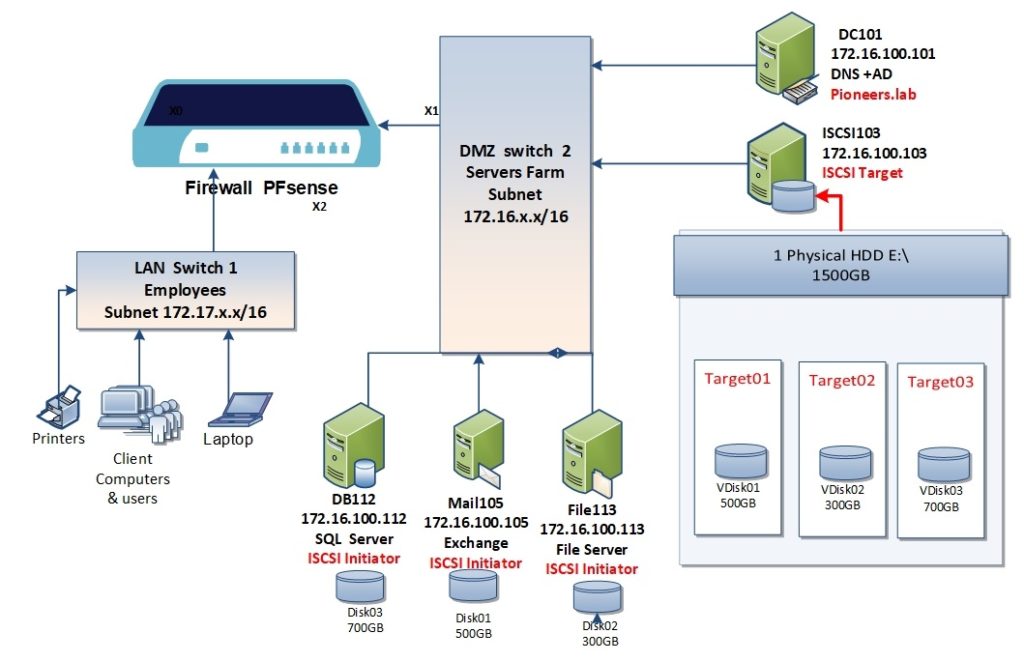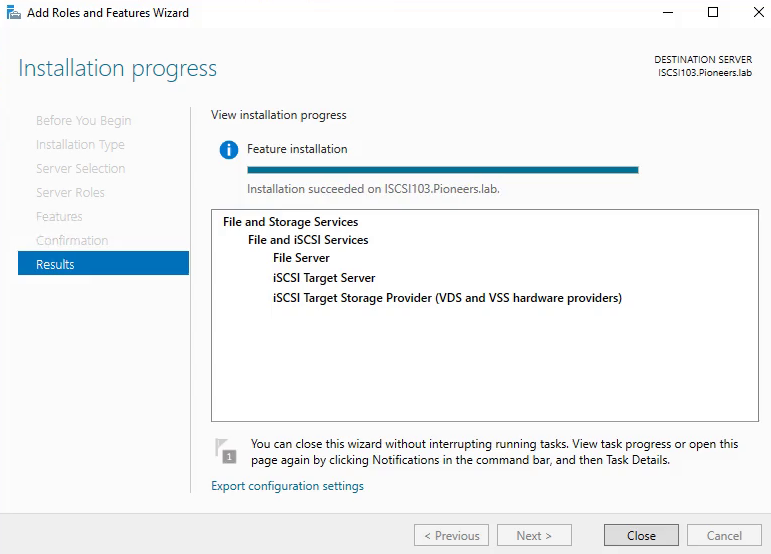ISCSI introduction
iSCSI is an industry standard protocol which allows sharing of block storage over Ethernet. It is a protocol for communicating with I/O devices, chiefly storage devices. iSCSI is an IP-based standard for connecting data storage devices over a network and moving data by carrying SCSI commands over IP networks. In simple words, iSCSI is an interface for communication between initiator and target.
Why ISCSI use TCP/IP ?
There is no packet loss while transferring data, if there is any loss, it is handled by the TCP/IP stack in the operating system.
The iSCSI protocol is a mapping of the SCSI remote procedure invocation model over the TCP protocol.
ISCSI Benefits
- iSCSI provides cheap connectivity as compared to fiber channel FC. since there is NO need extra hardware Like HBA or SAN storage
- An existing network can be used for iSCSI implementation. for best utilized of remote storage
- As iSCSI is used for block storage, it is very fast.
- IT administrators don’t need a lot of training on iSCSI storage since it is very easy to understand and implement.
- iSCSI is an IP-based protocol. It is FULLY based of TCP/IP and Ethernet.
iSCSI Components
- iSCSI Initiator– The client machine within a storage network is an iSCSI Initiator. The initiator can connect to the target by forming a session among them and can send iSCSI commands.
- iSCSI Target– The server machine within a storage network is an iSCSI target. An iSCSI target is any machine that receives iSCSI commands from an initiato
ISCSI Network Diagram
to understand ISCSI – lets to have a look to Pioneers Diagram below
we have installed windows 2016 server and join it to AD pioneers.lab
server has 2 HDD
first one for operating system
the second one is HDD with 1500 GB which will be used as shared storage for other server in the network [like SQL , Exchange , and File server ]
later we install windows feature [ ISCSI target ]
then each server will use windows feature [ISCSI initiator ] to connect virtual disk on ISCSI103 server as remote storage
[ISCSI initiator ] is pre-installed feature with windows installation – but is disabled
or we can set one virtual disk for all servers at once
OR : we can separate create virtual for each server which is recommended as you see above :
- Exchange Server will use VDisk01 with Disk space 500GB
- file Server will use VDisk02 with Disk space 300GB
- SQL Server will use VDisk03 with Disk space 700GB
TCP/IP use port 3260 for communication between ISCSI initiator and ISCSI target
ISCSI communication between ISCSI103 [ as ISCSI target ] and other server [ as ISCSI Initiator ] is plain but could be encrypted with Protocol CHAP
for more security : ISCSI Target can set which server is Allowed to access Virtual Disk [which called initiator list ]
this is brief introduction about ISCSI , but I am sure you will fully master it after first implementation
prepare server
preparing server is the same steps on any server we did before
install windows 216 server [with Desktop experience
sysprep to create new SID
assign static IP address :
- IP address : 172.16.100.103 /24
- default gateway : 172.16.100.11
- DNS : 172.16.100.101 , 172.16.100.102
- please disable IPv6
rename computer : ISCSI103 , as per our naming strategy , we are free to have your naming strategy
Join Active Directory : Pioneers.lab
install windows Feature ISCSI Target
the first step is to install windows feature ISCSI target
please make sure DVD [ windows 2016 server ] is inserted to accelerate installation process
open servermanager.exe
NOW ISCSI Target has been installed successfully
next article will discuses HOW to configure ISCSI target on server [ iscsi103 ] and configuring ISCSI initiator on other server[like WEB server and Exchange Server ] with security considerations
thank for joining us














